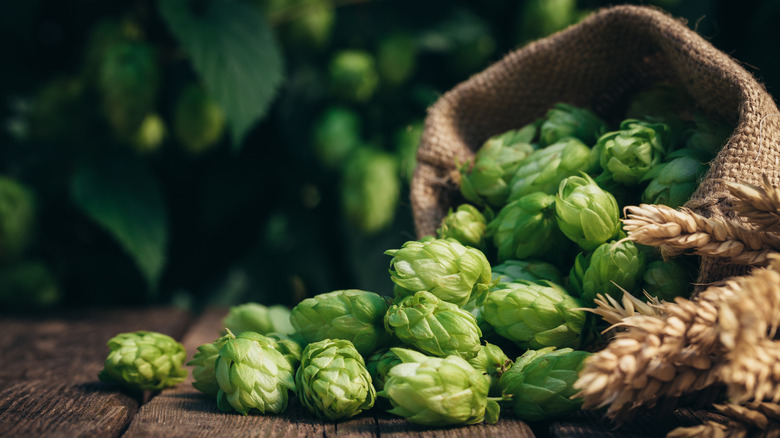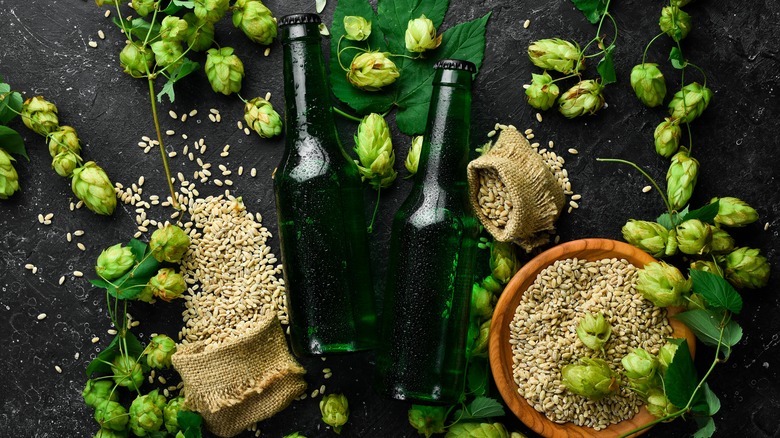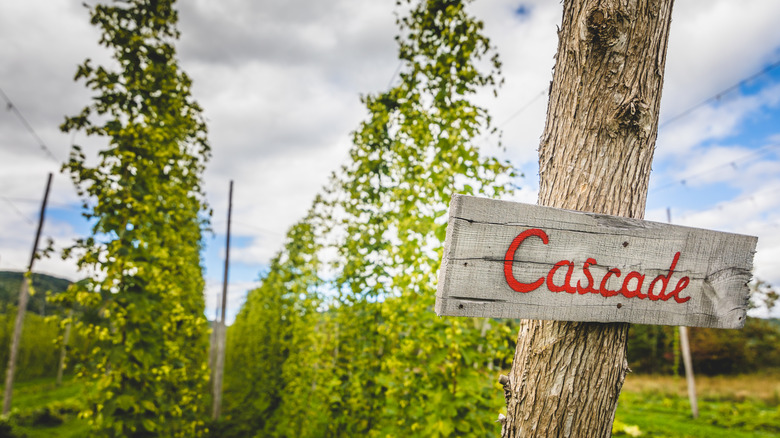What Are Hops And How Do They Impact Your Beer?
One of the most talked about ingredients in the beer brewing process is hops. Some brewing companies, like Hop Valley Brewing Co., take so much pride in their specialized use of this ingredient that they've centered their beer's labels and branding around it. What are hops though?
The common hop plant, or Humulus lupulus, is a climbing plant often trained to grow up and around a structure or strings in a hop yard. These plants grow best in mild climates. In North America, the Pacific Northwest is a major producer as the rainy weather makes for perfect growing conditions.
The hops themselves are the flowers of the plant. They resemble something similar to a green pinecone, only softer. There are glands inside the flowers that hold a resin called lupulin. This yellow and sticky lupulin adds to the aroma and bitterness of beer thanks to its three main chemical components: alpha acids, beta acids, and essential oils. The alpha and beta acids aid in adding bitterness to beer. The essential oils within the resin are broken down into hydrocarbons and are responsible for the beer's aroma.
It's common to hear the words hop or hoppy tossed around regarding flavor, but how exactly are these climbing plants changing your beer to make it more enjoyable?
There are a few ways hops can enhance the flavor of beer
Originally, the preservative properties of hop plants made them a popular ingredient in beer as they prolonged the shelf life. This is still the case, only now brewers have found a way to perfect their intended flavors by adding certain types of hops at different stages of the brewing process. The three most common hop categories are bittering, which have high alpha acid levels, finishing, which have high aroma levels, and dual, which have both.
There are two specific processes in which hops are added during brewing. The first is called dry hopping. This is when the flowers are added in the later stages of brewing, either during or after fermentation. Adding them during the less-hot stages of brewing prevents the flavor in the lupulin from boiling away and allows more distinct aromas and tastes.
Wet hopping is a way to blend hops with other flavors. It's less complex than dry hopping because it can be done anytime during brewing. What makes wet hopping trickier is that it calls for freshly picked hops. When fresh aren't available, the hops are made into pellets and packaged for shipment. Some breweries, like Lagunitas, will have hops quickly brought to them as soon as they're harvested to perform wet hopping and achieve the flavors that make certain beers like the Born Yesterday India Pale Ale so delicious.
Hops can be used alone or with other hops
There's a variety of hops that add different qualities to beer. Among them are Cascade, Mosaic, and Citra hops to name a few. Citra packs a powerful flavor that makes them perfect for bringing on the aroma and bitterness. Beers that use Citra hops are typically India Pale Ales (IPA) like Deschutes Fresh Squeezed IPA and Sierra Nevada Tropical Torpedo.
Cascade hops were created in the USDA hop breeding program at Oregon State University, and are now commonly used in countless craft beers like American Pale Ales and India Pale Ales to add notes of both citrus and spice. Cascade hops are frequently used either exclusively in beers, like the Old Foghorn Barleywine from Anchor Brewing Co., or mixed with other types to create unique flavor profiles.
Another commonly used hop is the Mosaic hop. They bring earthy, pine, and fruity flavors to beer that people commonly associate with IPAs. Beers like Rogue's Batsquach IPA mix in Mosaic to blend earthy flavors and make the drinker feel like they're one with nature. Or as it says in the Batsquatch description on Rogue's website, "Perfect for camping and potentially making a new friend." Cleary, hops have an intense power to make anyone's beer-drinking experience one that's enjoyable, flavorful, and unique to every can, bottle, or draft.


